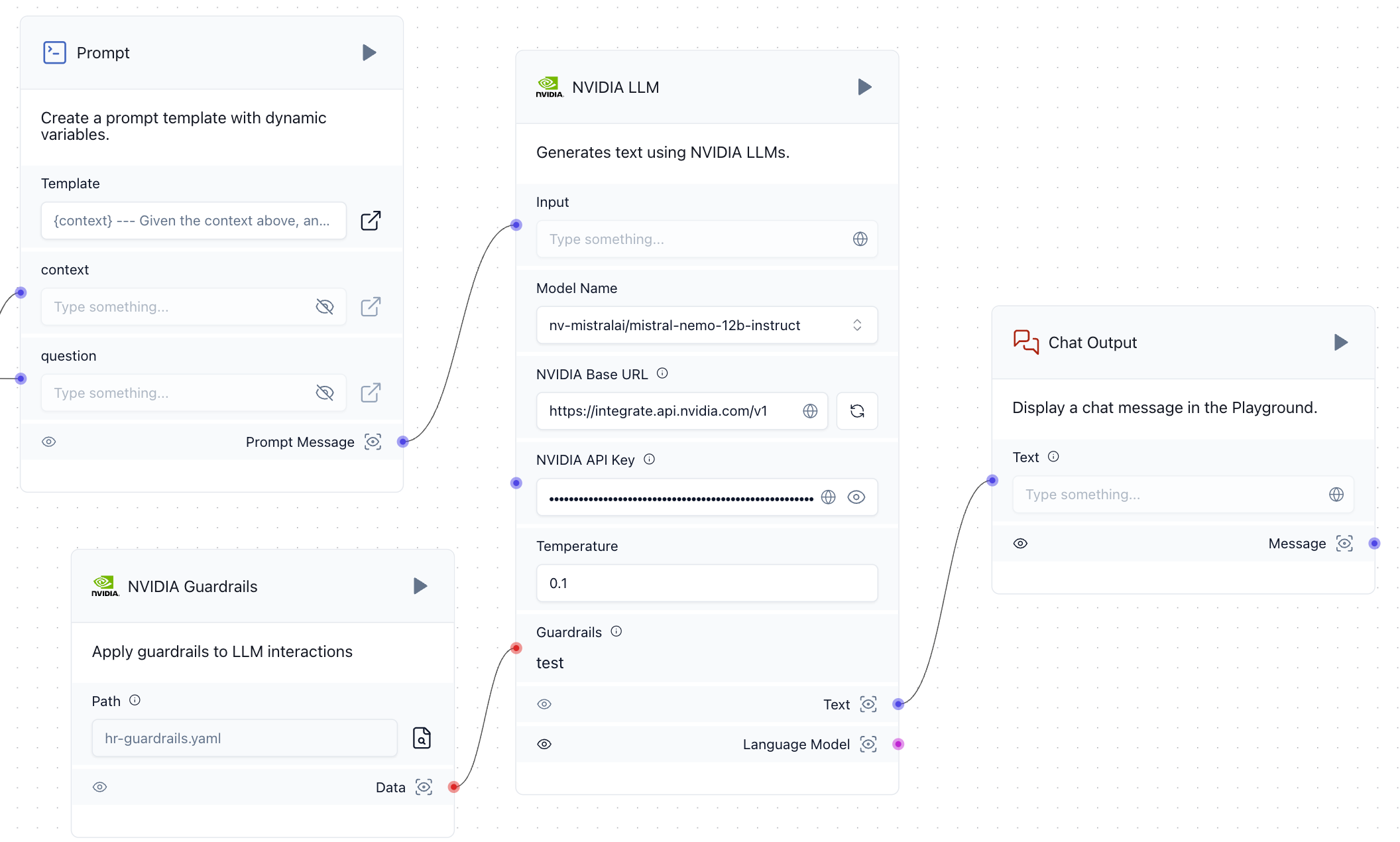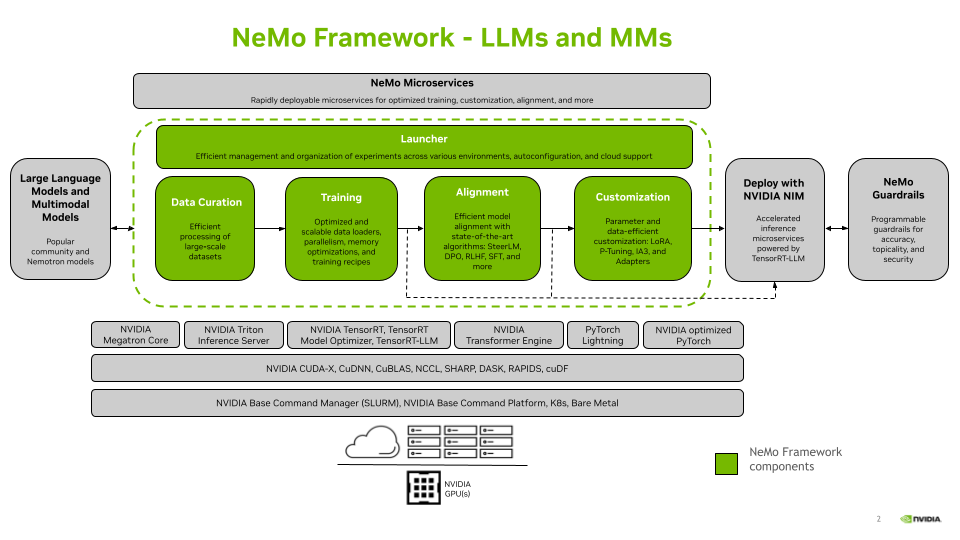As enterprises increasingly adopt AI technologies, they face a complex challenge of efficiently developing, securing, and continuously improving AI applications to leverage their data assets. They need a unified, end-to-end solution that simplifies AI development, enhances security, and enables continuous optimization, allowing organizations to harness the full potential of their data for AI-driven innovation.
This is why DataStax worked with NVIDIA to create the DataStax AI Platform, now integrated with NVIDIA NeMo and NIM, part of NVIDIA AI Enterprise software. The Platform provides a unified stack, making it easier for enterprises to build AI applications that leverage their data and the tools necessary to continuously tune and improve application performance and relevancy and achieve 19x better performance throughput. The platform builds on existing integrations with DataStax and the NVIDIA AI Enterprise platform announced earlier this year.
In this blog post, we’ll investigate multiple points in the generative AI application lifecycle and share how the DataStax AI Platform built with NVIDIA simplifies the process — from creating the initial application using NVIDIA NIM Agent Blueprints and Langflow, to enhancing LLM responses with NVIDIA NeMo Guardrails, to further improving application performance and relevancy with customer data and fine-tuning.
Getting started quickly with NIM Agent Blueprints and Langflow
NVIDIA NIM Agent Blueprints provide reference architectures for specific AI use cases, significantly lowering the entry barrier for AI application development. The integration of these blueprints with Langflow creates a powerful synergy that addresses key challenges in the AI development lifecycle and can reduce development time by up to 60%.
Consider the multimodal PDF data extraction NIM Agent Blueprint, which coordinates various NIM microservices including NeMo Retriever for ingestion, embedding, and reranking and for optimally running the LLM. This blueprint tackles one of the most complex aspects of building retrieval-augmented generation (RAG) applications: document ingestion and processing. By simplifying these intricate workflows, developers can focus on innovation rather than technical hurdles.
Langflow’s visual development interface makes it easy to represent a NIM Agent Blueprint as an executable flow. This allows for rapid prototyping and experimentation, enabling developers to:
- Visually construct AI workflows using key NeMo Retriever embedding, ingestion, and LLM NIM components
- Mix and match NVIDIA and Langflow components
- Easily incorporate custom documents and models
- Leverage DataStax Astra DB for vector storage
- Expose flows as API endpoints for seamless deployment

This combination not only streamlines the development process, but also bridges the gap between prototype and production. It also encourages team collaboration, enabling multiple users, even with a less technical background, to understand, test, and adjust the application. By making advanced AI capabilities more accessible, it fosters innovation and opens up new possibilities for AI applications across various industries.
Enhancing AI security and control with NeMo Guardrails
Building on the rapid development enabled by NIM Agent Blueprints in Langflow, enhancing AI applications with advanced security features becomes remarkably straightforward. Langflow’s component-based approach, which already enabled quick implementation of the PDF extraction blueprint, now facilitates seamless integration of NeMo Guardrails.
NeMo Guardrails offers crucial features for responsible AI deployment such as:
- Jailbreak and hallucination protection
- Topic boundary setting
- Custom policy enforcement
The power of this integration lies in its simplicity. Just as developers could swiftly create the initial application using Langflow’s visual interface, they can now drag and drop NeMo Guardrails components to enhance security. This approach enables rapid experimentation and iteration, allowing developers to:
- Easily add content moderation to existing flows
- Quickly configure thresholds and test various safety rules
- Seamlessly integrate advanced security techniques by adding more guardrails with minimal code changes

By leveraging Langflow’s pre-built integration with NeMo Guardrails, developers can focus on fine-tuning AI behavior rather than grappling with complex security implementations. This integration not only reduces development time, but also promotes the adoption of robust safety measures in AI applications, positioning organizations at the forefront of responsible AI innovation.
Evolving AI through continual improvement
In the rapidly advancing field of AI, static models — even LLMs — quickly become outdated. The integration of NVIDIA NeMo fine-tuning tools, Astra DB’s search/retrieval tunability, and Langflow creates a powerful ecosystem for continuous AI evolution, ensuring that applications achieve higher relevance and performance with each iteration.
This integrated approach uses three key components for model training and fine-tuning:
- NeMo Curator: Refines and prepares operational and customer interaction data from Astra DB and other sources, creating optimal datasets for fine-tuning.
- NeMo Customizer: Utilizes these curated datasets to fine-tune LLMs, SLMs, or embedding models, tailoring them to specific organizational needs.
- NeMo Evaluator: Rigorously assesses the fine-tuned models across various metrics, ensuring performance improvements before deployment.

By modeling this fine-tuning pipeline visually in Langflow, organizations can create a seamless, iterative process of AI improvement. This approach offers several strategic advantages:
- Data-driven optimization: Leveraging real-world interaction data from Astra DB ensures that model improvements are based on actual usage patterns and customer needs.
- Agile model evolution: The visual pipeline in Langflow allows for quick adjustments to the fine-tuning process, enabling rapid experimentation and optimization.
- Customized AI solutions: Fine-tuning based on organization-specific data leads to AI models that are uniquely tailored to particular industry needs or use cases.
- Continuous performance enhancement: Regular evaluation and fine-tuning ensure that AI applications consistently improve in relevance and effectiveness over time.
This integrated ecosystem transforms AI development from a point-in-time deployment to a continuous improvement cycle, enabling organizations to maintain cutting-edge AI capabilities that evolve with their business needs.
The DataStax AI Platform built with NVIDIA unifies advanced AI tools included with NVIDIA AI Enterprise, DataStax’s robust data management, search flexibility, and Langflow’s intuitive visual interface, creating a comprehensive ecosystem for enterprise AI development. This integration enables organizations to rapidly prototype, securely deploy, and continuously optimize AI applications, transforming complex data into actionable intelligence while significantly reducing time-to-value.
To learn more, check out this video and sign up for the DataStax AI Platform built with NVIDIA.
DataStax Announces New AI Development Platform, Built with NVIDIA AI





